What's New
Displaying results 4741 - 4750 of 4914

Resource | Publications,
The injecting drug users function as a “bridging population” for HIV transmission between a core HIV risk group and the general population. The main objective of this study is to estimate the prevalence of HIV among IDUs and assess their role in the transmission of HIV. The study was conducted in the three districts: Morang, Sunsary and Jhapa of Eastern Nepal. Three hundred and forty-five IDUs were sampled from 23 randomly selected sites, through respondent-driven sampling (RDS).

Resource | Publications,
AIDS is the leading cause of death for people aged 15-29 in the world, and although rates have declined slightly in recent years, Cambodia still has the highest HIV seroprevalence in Asia. HIV can be transmitted through blood products and injection drug use but heterosexual contact, primarily through the sex trade, remains the major route of HIV transmission in Cambodia.
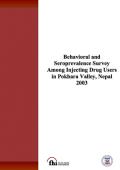
Resource | Publications,
Injecting drug user function as a “bridging population” for HIV transmission between a core HIV risk group and the general population. The main objective of this study is “to estimate the prevalence of HIV among IDUs and assess their role in the transmission of HIV.” The study was conducted in Pokhara Valley of Kaski districts. Three hundred IDUs were sampled from 20 randomly selected sites, through respondent-driven sampling (RDS).

Resource | Publications,
Hong Kong, located in Asia the new burning place of HIV infection, is still having a relatively low prevalence of HIV infection. While sexual transmission is the predominant route of transmission in Hong Kong, an upsurge of infection in injecting drug users is a concern from the experience in other Asian localities. Various public health measures in Hong Kong have kept the HIV prevalence of drug users at low level, as compared with neighbouring cities.

Resource | Publications,
The aim of this study is to discuss the role of NGOs in HIV/AIDS work, but also what capability the government possesses in the field, in Cambodia. The starting-point is that the HIV/AIDS situation and the NGO community in Cambodia are unusual. The Cambodian state is seen from a weak state perspective. A policy process approach is used to see in what phases the actors are capable and incapable respectively.
It was found that both NGOs and the government take advantage of each others weaknesses and strengths. The government does not emphasise implementation due to that NGOs constitute a strong group of actors in this field. Still, in formulating HIV/AIDS sensitive policies the government is active and the Cambodian political commitment in relation to HIV/AIDS is unique in a Third World perspective.
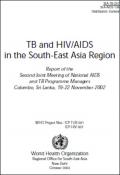
Resource | Publications,
Tuberculosis and HIV/AIDS are both major public health problems in the South-East Asia Region of WHO. Of the 20 million people suffering from active TB globally, 8 million are in this Region. Each year, three million new cases of TB are added and nearly three-quarters of a million die of the disease. At the same time, the Region is home to nearly 6 million people living with HIV/AIDS or nearly 18% of PHA, the largest proportion following sub-Saharan Africa, making it the second highest Region affected by HIV in the world.
The SEA Region has been the first to initiate joint annual meetings for the national TB and HIV programme managers of Member Countries. This has led to laying the foundation for collaboration between the two programmes. The second joint meeting of National HIV/AIDS and TB Programme Managers from Member Countries in the SEA Region was held between the 19-22 November 2002 at Colombo, Sri Lanka.

Resource | Publications,
The HIV epidemic has posed major challenges to tuberculosis (TB) control efforts globally. Increasing TB case rates over the past decade in many countries in sub- Saharan Africa are largely attributable to the HIV epidemic. The extent of the HIV/TB epidemic in South-East Asia will depend on the future course of the HIV epidemic, as well as on efforts to control TB. Preventing HIV-associated TB means going beyond the full implementation of DOTS. It includes preventing HIV infec- tion, preventing progression of latent TB infection to active disease and the provision of HIV/AIDS care and antiretroviral treatment (ART).
The goal of the HIV/TB strategy is to reduce HIV/TB- associated morbidity and mortality through collaboration between national AIDS and national TB programmes. The objectives are (1) to decrease the burden of TB among People Living with HIV/AIDS (PLWHA) and (2) to decrease the burden of HIV in TB patients.
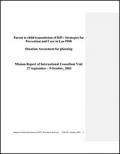
Resource | Publications,
The HIV epidemic has been spreading slowly in Lao PDR, and the prevalence remains low. Nevertheless there is potential for the epidemic to grow and much need for further prevention efforts and care and support initiatives. The National Committee for the Control of AIDS (NCCA) has overseen a wide range of responses and the development of an inter-sectoral National HIV/AIDS/STD Policy. UNICEF Vientiane has been responding to the new problems of the HIV epidemic since 1996. The HIV/AIDS Unit has supported a range of prevention and care initiatives with the government of Lao PDR, and a number of other partners. The NCCA has established a new Taskforce to address prevention and care in relation to mother to child transmission (MTCT) of HIV. UNICEF Vientiane wishes to assist the Taskforce to develop appropriate national policies and strategies to address the problems raised by parent to child transmission of HIV.
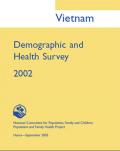
Resource | Publications,
The 2002 Vietnam Demographic and Health Survey (VNDHS 2002) is a nationally representative sample survey of 5,665 evermarried women age 15-49 selected from 205 sample points (clusters) throughout Vietnam. It provides information on levels of fertility, family planning knowledge and use, infant and child mortality, and indicators of maternal and child health. The survey included a Community/ Health Facility Questionnaire that was implemented in each of the sample clusters.
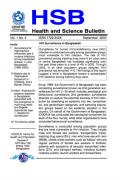
Resource | Publications,
Surveillance for human immunodeficiency virus (HIV) infection is conducted annually among population groups most vulnerable to HIV infection. The rate of HIV prevalence among injecting drug users in an urban area in central Bangladesh has increased significantly over the past three years to a level of 4% in 2002. Through 2002, in all other population groups sampled, HIV prevalence has remained <1%. The findings of this report suggest a trend in Bangladesh toward a concentrated HIV epidemic among injecting drug users.





